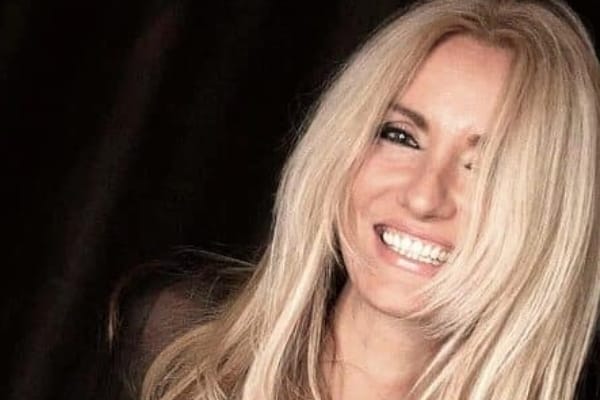One person’s trash is another’s treasure. When Larry Fuller’s older brother brought home an upright piano a cousin was discarding, the “little kid” from Toledo discovered a passion that would take him to the forefront of North America’s jazz scene.
“I just started playing it by ear and then I went on to have lessons and just kept studying the instrument,” the New York-based pianist said.
Like many other kids, Fuller first dabbled in the classical music canon, but his penchant for jazz emerged early.
“It’s important for any pianist to study some of that repertoire. It really gives you a foundation for playing the instrument: your touch, the sound that you get out of the instrument and everything.”
Fuller was still in middle school when he encountered Floyd “Candy” Johnson, a jazz saxophonist who had played with legendary band leaders such as Count Basie and Duke Ellington. Johnson had recently left New York to teach in Ohio. He enlisted young Fuller to play piano in his Toledo All-City Jazz Ensemble.
“He ended up taking me on some of his local professional gigs when I was still very young [aged 13, in fact]. It was just a great experience for me, having a teacher like that.”
Several pianists earned Fuller’s admiration, including Art Tatum and the Montreal-based keyboard genius, Oscar Peterson.
“He’s just an icon of a pianist, with his incredible command of the instrument, but also his sense of swing and his interpretation and his embracing of the blues in his playing,” Fuller said.
“That’s why it was such a thrill for me to get to play with the Ray Brown Trio, because when I was a kid, I was listening to all those Oscar Peterson records, and it was always Ray Brown on the bass.”
But it isn’t only pianists who have informed Fuller’s style.
“I love so many musicians who play this music on whatever instrument. But I really have gravitated toward musicians who really swing and have blues vocabulary in their musical DNA.
“I love people like [sax player] Stanley Turrentine, or [trumpeter] Clark Terry, or [guitarist] Wes Montgomery, or [organist] Jimmy Smith … people who really swing and play some blues.”
Fuller doesn’t demur when reminded that critics have described him as someone who can “swing like a beast.”
“I consider that a tremendous compliment and I do try to swing. I love the joyous spirit of playing jazz in that kind of style,” he admitted.
“One thing those types of artists have in common is that they play very high-level music, but it’s music that is still accessible to the audience. They’re not playing way above the heads of the audience and they’re not only playing for a handful of other musicians.”
That kind of accessibility is also Fuller’s goal as a performer.
“I hope that I can play at a very high level, but I also want to reach an audience and I want to bring joy and that sense of swinging. I want to bring all that to the table when I perform.”
Asked for his take on the overused jazz terms, “swing” and “groove,” Fuller said it’s hard to put elements of music into words.
“That’s why it’s music; it’s a language unto itself. But I would say swing and groove is just the infectious pulse of jazz that has become universally known.
“It’s just a feeling that you try to project when you’re playing the music.”
For Fuller, music is more about feeling than thinking.
“I want to reach an audience more on an emotional level than on an intellectual level. I want people to feel good with my music and I think sometimes jazz becomes so complex and so complicated that it’s really almost for other musicians,” he said.
“There’s a lot of jazz that, even as a musician, I don’t really care to listen to, because it doesn’t grab me on any kind of an emotional level. It’s more just complex harmonies and lots of notes and maybe an incredible amount of dissonance.
“Sometimes music like that can be impressive, but I find myself unable to listen to it for extended periods of time.”
If Fuller were abandoned on a desert island with just one LP, the one he’d choose would be Art Tatum’s 1968 classic on Columbia Records, Piano Starts Here.
“That’s pretty much the benchmark of the unobtainable height of virtuosity.”
The New Yorker will be in Whitehorse this weekend to kick off Jazz Yukon’s 2019/20 season of Jazz on the Wing. The other long-time members of the Larry Fuller Trio on the bill are bassist George Delancey and drummer Jason Tiemann. The program will include offerings from George Gershwin, Wes Montgomery, Oscar Peterson and Stevie Wonder, whose tune, “Overjoyed” was the title track of Fuller’s 2018 CD, which rose to Number 5 on U.S. jazz charts this year.
It’s a first Yukon visit for all of the musicians, Fuller is hoping it will offer his first sighting of the northern lights, which he and his wife failed to see on a special trip to Iceland.
The Jazz on the Wing concert starts at 7:30 p.m. on Sunday, Sept. 29 onstage at the Yukon Arts Centre. For more information, check JazzYukon.ca




